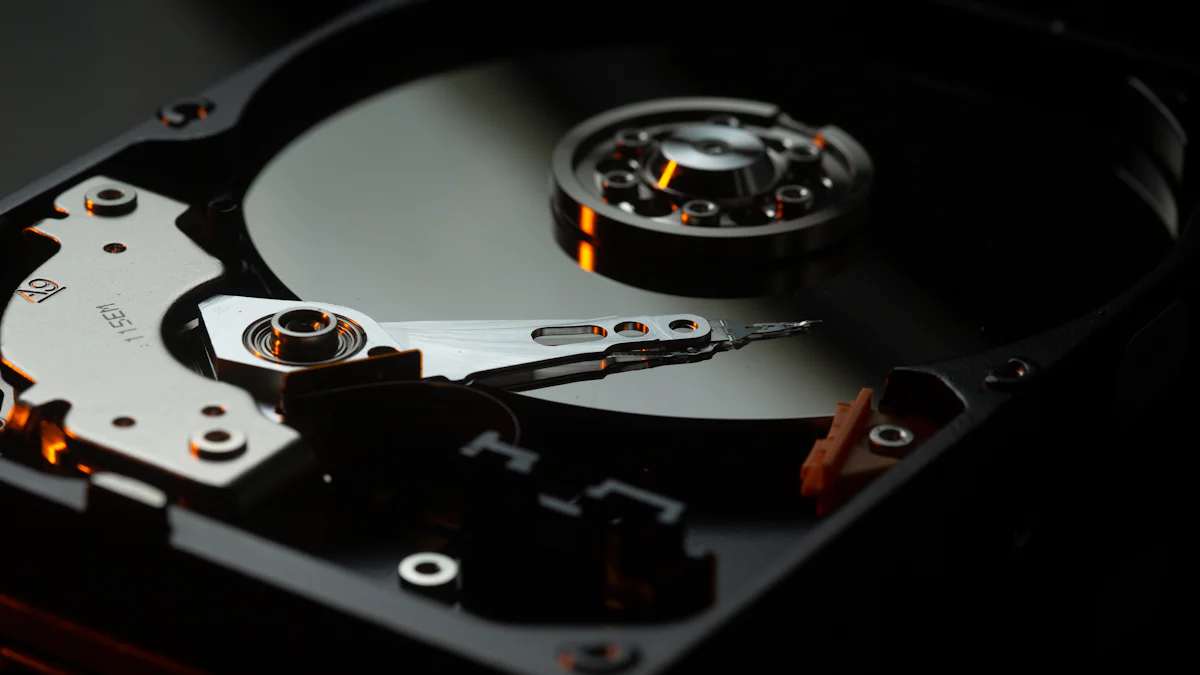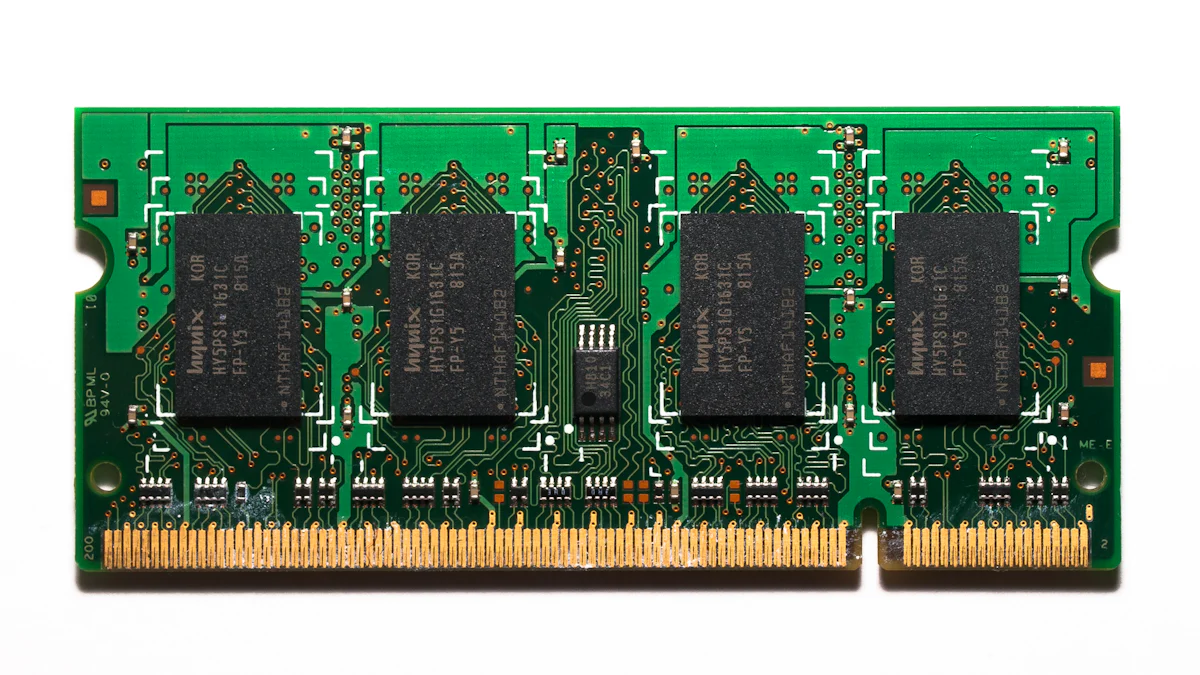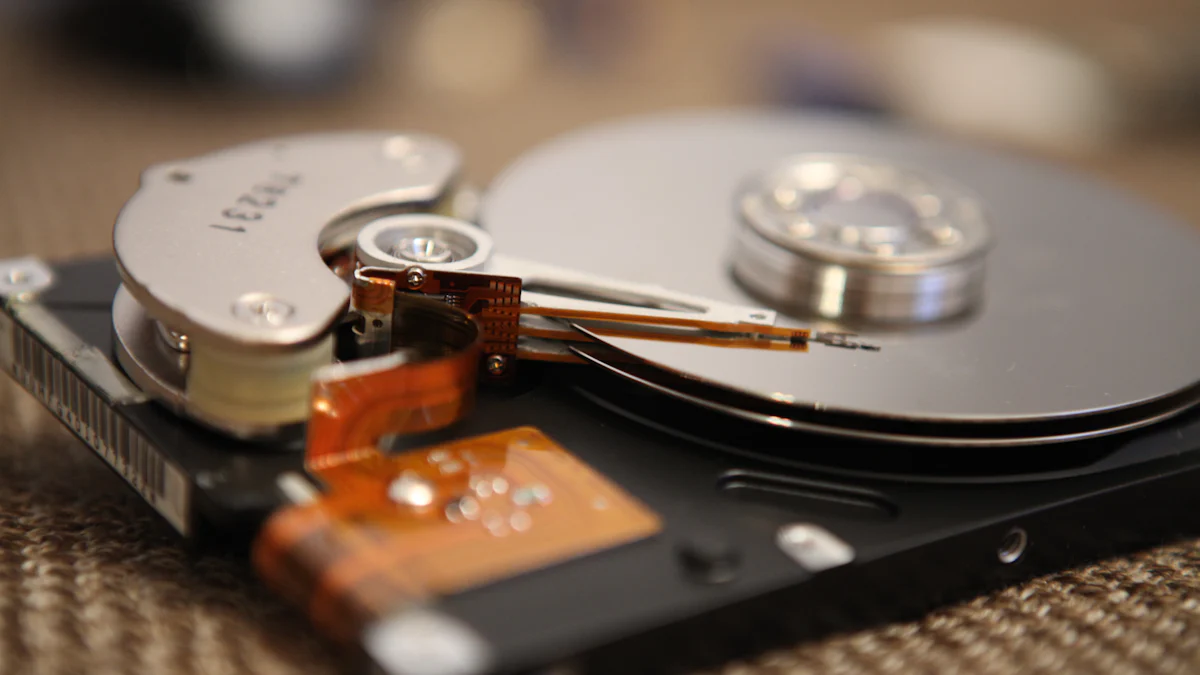


Storage Class Memory (SCM) represents a groundbreaking advancement in computer memory technology. SCM combines dynamic random access memory with NAND flash memory to enhance data storage and processing capabilities. The global SCM market is experiencing rapid growth due to its ability to provide faster performance and lower application latency. SCM's unique blend of speed and persistence addresses specific gaps in the memory hierarchy, making it crucial for modern technological applications. The blog explores the significance of SCM in today's technology landscape.
Understanding Storage Class Memory
Definition and Characteristics
What is SCM?
Storage Class Memory (SCM) represents a new class of memory devices. SCM combines the speed of dynamic random access memory (DRAM) with the persistence of NAND flash memory. This combination allows SCM to provide fast data access and retain information even when power is lost. SCM fits between traditional DRAM and slower storage solutions, offering a unique balance of speed and persistence.
Key Features of SCM
SCM offers several key features that enhance its functionality:
- Byte Addressability: SCM allows data to be accessed at the byte level, similar to DRAM.
- Persistence: Data remains intact without power, ensuring data integrity.
- Low Latency: SCM provides quick data retrieval, reducing application latency.
- High Write Durability: SCM withstands more write cycles compared to traditional flash storage.
Types of Storage Class Memory
Non-volatile Memory (NVM)
Non-volatile Memory (NVM) forms a crucial part of SCM. NVM retains data without a continuous power supply. This feature makes NVM essential for applications requiring data persistence. NVM includes technologies like NAND flash, which provide reliable storage solutions.
Persistent Memory (PMEM)
Persistent Memory (PMEM) bridges the gap between memory and storage. PMEM offers the speed of DRAM with the persistence of storage devices. This type of memory accelerates write-intensive workloads and enhances system performance. PMEM plays a vital role in modern computing environments by providing efficient data management.
The Evolution of Storage Class Memory Technologies

Traditional Memory vs. SCM
Speed and Performance
Traditional memory technologies like DRAM and NAND flash have limitations. DRAM provides high speed but lacks persistence. NAND flash offers persistence but suffers from slower speeds. Storage Class Memory (SCM) bridges this gap. SCM delivers faster read and write operations than NAND flash. SCM extends the performance advantage of DRAM to persistent storage.
Cost and Efficiency
DRAM is costly and energy-intensive. NAND flash is more affordable but less efficient. SCM offers a balance. SCM is less expensive than DRAM and more energy-efficient than NAND flash. This makes SCM a cost-effective solution for modern data centers and cloud computing.
Historical Development
Early Memory Technologies
Early memory technologies relied on mechanical storage. Rotating disks dominated the landscape. These systems were slow and power-hungry. The dream of replacing disk drives with solid-state memory began to take shape. Innovations in FLASH, Phase Change Memory, and Magnetic RAM paved the way for SCM.
Transition to SCM
The transition to SCM marked a significant shift. SCM combines the benefits of solid-state memory with the archival capabilities of traditional storage. This evolution impacts storage controllers and systems design. SCM now occupies a critical middle ground between main memory and storage. This new tier accelerates storage in data centers and mass storage devices. SCM's emergence revolutionizes the data storage landscape.
How Storage Class Memory Works
Technical Architecture
Memory Hierarchy
Storage Class Memory occupies a unique position in the memory hierarchy. SCM bridges the gap between volatile DRAM and non-volatile storage solutions. This placement allows SCM to deliver both speed and persistence. SCM enhances data retrieval by providing access at the byte level. The architecture supports applications requiring rapid data processing and low latency.
Integration with Existing Systems
SCM integrates seamlessly with existing systems. The technology works alongside traditional memory and storage devices. SCM improves system performance without requiring major infrastructure changes. Data centers benefit from SCM's ability to accelerate virtual machine storage. Distributed-cloud applications also see enhanced performance through SCM integration.
Data Management
Data Persistence
Data persistence is a key feature of Storage Class Memory. SCM retains data even when power is lost. This capability ensures data integrity and reliability. Applications requiring consistent data access benefit from SCM's durability. Write-intensive workloads, such as online transaction processing, experience improved efficiency.
Data Access Speed
SCM provides faster data access compared to traditional storage solutions. The technology reduces application latency and accelerates high-performance computing tasks. SCM's low-latency characteristics enhance write-intensive operations. Users experience improved responsiveness in environments with demanding data access requirements.
Benefits of Storage Class Memory
Performance Enhancements
Faster Data Processing
Storage Class Memory (SCM) accelerates data processing. SCM reads and writes data faster than traditional NAND flash. This speed enhances performance in data-intensive applications. SCM's high bandwidth supports rapid data retrieval. Users experience quicker access to information.
Improved System Responsiveness
SCM improves system responsiveness. The technology reduces latency in data access. Applications run more smoothly with SCM integration. Users notice faster response times in computing tasks. SCM enhances the overall user experience.
Cost-Effectiveness
Long-term Savings
SCM offers significant long-term savings. The cost per gigabyte of SCM is lower than DRAM. Organizations reduce expenses by adopting SCM. The durability of SCM minimizes replacement costs. SCM provides a cost-effective solution for data centers.
Energy Efficiency
SCM contributes to energy efficiency. The technology consumes less power than traditional DRAM. Data centers benefit from reduced energy usage. SCM's efficiency supports sustainable computing practices. Organizations achieve energy savings with SCM implementation.
Real-World Applications of Storage Class Memory

Enterprise Solutions
Data Centers
Data centers require efficient data management. Storage Class Memory (SCM) enhances data processing speed. SCM reduces latency in data centers. Faster data access improves overall performance. SCM technology supports high-volume data operations. Enterprises benefit from increased productivity. SCM enables real-time data insights. This capability is crucial for modern data centers.
Cloud Computing
Cloud computing relies on rapid data retrieval. SCM provides the necessary speed and persistence. SCM technology supports scalable cloud solutions. Enterprises experience improved reliability with SCM. High endurance of SCM enhances cloud infrastructure. SCM facilitates efficient data analysis. This efficiency drives innovation in cloud services.
Consumer Electronics
Smartphones
Smartphones demand fast and reliable memory. SCM offers quick data access for mobile devices. Users enjoy enhanced app performance with SCM. SCM technology ensures data integrity in smartphones. The persistence of SCM benefits mobile applications. SCM supports advanced features in consumer electronics.
Laptops
Laptops require efficient memory solutions. SCM improves system responsiveness in laptops. Users experience faster boot times with SCM. SCM technology enhances multitasking capabilities. The energy efficiency of SCM benefits portable devices. SCM supports high-performance computing in laptops. This advancement meets the needs of modern users.
Challenges and Limitations of Storage Class Memory
Technical Challenges
Compatibility Issues
Storage Class Memory (SCM) faces compatibility issues with existing systems. Many current infrastructures rely on traditional memory technologies. SCM requires specific hardware and software adaptations. These adaptations ensure seamless integration. Organizations often hesitate to invest in new technologies. Compatibility concerns slow down SCM adoption.
Scalability Concerns
Scalability presents another challenge for SCM. The technology must support growing data demands. Industries like finance and healthcare require scalable solutions. SCM must handle increasing workloads efficiently. Current SCM technologies vary in maturity. Some technologies may not scale effectively. This limitation affects widespread SCM implementation.
Market Adoption
Industry Hesitation
Industry hesitation impacts SCM market adoption. Organizations evaluate cost versus performance benefits. SCM offers faster performance and lower latency. However, the price remains a concern. SCM drives cost four to five times more than NVMe drives. Companies weigh these factors before investing in SCM.
Cost Barriers
Cost barriers pose significant challenges for SCM adoption. High prices deter many organizations. Companies prioritize budget-friendly solutions. SCM's price-performance ratio influences decision-making. Despite potential productivity gains, costs remain a hurdle. Organizations must consider long-term benefits of SCM.
Future of Storage Class Memory
Emerging Trends
Innovations in SCM
Innovations in Storage Class Memory continue to transform computing landscapes. Edge computing and AI advancements demand storage solutions that deliver real-time insights. SCM meets these needs with its speed and persistence. Autonomous vehicles and smart cities benefit from SCM's capabilities. Industrial automation also finds SCM essential for efficient data handling.
Potential Market Growth
The market for Storage Class Memory shows significant growth potential. Enterprises gain advantages by adopting an SCM tier. SCM drives last longer than conventional flash drives. Large data sets become accessible in real time, similar to DRAM. SCM costs less than expanding DRAM capacity. Lower latencies and higher throughput enhance performance over SSDs. SCM also protects crucial data during power disruptions.
Predictions and Expectations
Long-term Impact on Technology
Storage Class Memory will have a profound impact on technology. SCM bridges the gap between memory and storage. The technology supports faster data processing and improved system responsiveness. Industries like finance and healthcare will rely on SCM for scalable solutions. SCM's efficiency will drive innovation in various sectors.
Future Developments
Future developments in Storage Class Memory will focus on enhancing scalability. SCM must support growing data demands across industries. Researchers will work on overcoming current limitations. New technologies will emerge to improve SCM's performance. The evolution of SCM will continue to revolutionize data storage and management.
Storage Class Memory plays a vital role in modern technology. SCM offers a unique blend of speed and persistence, enhancing data processing and system responsiveness. The potential to revolutionize industries like finance and healthcare makes SCM indispensable. Enterprises benefit from SCM's cost-effectiveness and energy efficiency. Challenges exist, but the advantages outweigh the hurdles. SCM promises significant improvements in productivity and innovation. Further exploration and adoption of SCM will drive future technological advancements.
FAQ
Storage Class Memory represents a new category of memory devices. SCM combines the speed of dynamic random access memory with the persistence of NAND flash memory. This technology offers byte addressability and data persistence.
SCM provides faster performance and lower application latency than traditional storage solutions. The technology accelerates write-intensive workloads and enhances high-performance computing. SCM improves system responsiveness and data retrieval speed.
Traditional memory like DRAM offers high speed but lacks persistence. NAND flash provides persistence but suffers from slower speeds. SCM bridges this gap by offering both speed and persistence, making it suitable for various applications.
Enterprises benefit from SCM through improved data processing speed and reduced latency. SCM supports high-volume data operations and real-time data insights. The technology enhances productivity and efficiency in data centers and cloud computing environments.
SCM faces compatibility issues with existing systems and scalability concerns. High costs deter many organizations from adopting SCM. Companies evaluate the price-performance ratio before investing in SCM technology.
The global SCM market shows significant growth potential. Innovations in SCM continue to transform computing landscapes. The technology supports emerging trends like edge computing and AI advancements. SCM will have a profound impact on technology by bridging the gap between memory and storage.
Continue Reading About Storage Class Memory
2025 Best Data Integration Solutions and Selection Guide
Explore top data integration solutions for 2025, enhancing data management and operational efficiency with leading platforms like Fivetran and Talend.
Howard
Dec 19, 2024
2025's Best Data Validation Tools: Top 7 Picks
Explore the top 7 data validation tools of 2025, featuring key features, benefits, user experiences, and pricing to ensure accurate and reliable data.
Howard
Aug 09, 2024
2025 Data Pipeline Examples: Learn & Master with Ease!
Unlock 2025’s Data Pipeline Examples! Discover how they automate data flow, boost quality, and deliver real-time insights for smarter business decisions.
Howard
Feb 24, 2025
Best Data Integration Platforms to Use in 2025
Explore the best data integration platforms for 2025, including cloud-based, on-premises, and hybrid solutions. Learn about key features, benefits, and top players.
Howard
Jun 20, 2024
Best Data Integration Vendors for Seamless Workflows
Discover the top 20 data integration vendors of 2025 for seamless workflows. Compare tools like Talend, AWS Glue, and Fivetran to optimize your data processes.
Howard
Jan 22, 2025
Best Data Management Tools of 2025
Explore the best data management tools of 2025, including FineDataLink, Talend, and Snowflake. Learn about their features, pros, cons, and ideal use cases.
Howard
Aug 04, 2024


